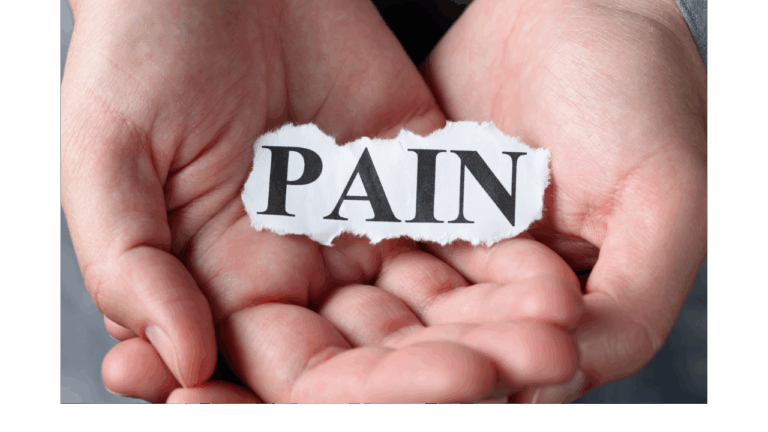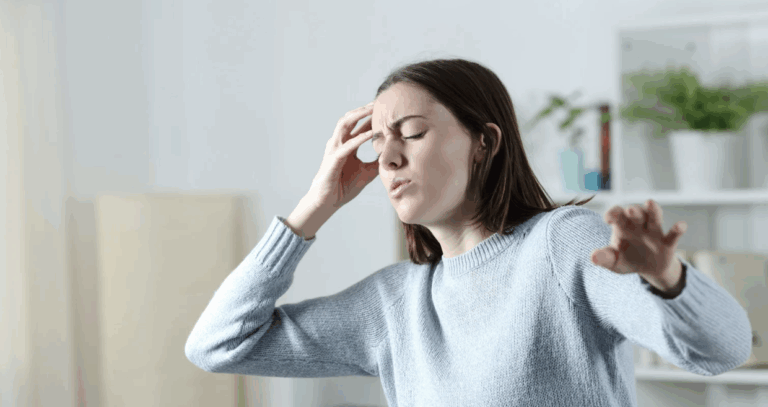- POTS and Exercise: The First Step Everyone Misses - 27 June 2025
- The Missing Link Between Breathlessness, Fatigue, and Chronic Pain: Understanding CO₂ Tolerance - 19 June 2025
- What is Mast Cell Activation Syndrome? - 12 May 2025
Pain in the shoulder blade and neck area is a common complaint that we hear a lot from our Fibromyalgia clients. It’s not uncommon for pain and fatigue to change how we move, how we sit, and how we use our bodies. The body wide pain that comes with Fibromyalgia often causes us to adopt a guarding posture, which over time makes certain structures like the shoulder blades become stiff through lack of use and blood flow. Over time they can become painful, resulting in us using them less and less, which ultimately leads to more pain.
Chronic pain is a doozy, because there is an infinite number of variables that contribute to how it’s created. It’s a huge toss-up between biological factors like tissue tolerance and posture, psychological factors like fear and past experiences, and social factors like where you are and who you are with. When all these factors work together, we often experience pain.
You don’t need to look very far to find someone with what would be deemed as “bad posture” who experiences pain. However, you will find just as many with “bad posture” who have no pain at all. Pain and posture don’t correlate very well in a general sense. In fact, an abundance of studies shows pain and posture are not mutually exclusive. However, we know those with Fibromyalgia are more sensitive to physical stressors, which may account for why those with Fibro often find staying in one position for a short time, incredibly painful. If we factor in other issues like fear of movement, emotional distress from being in pain, and a lowered tissue tolerance, then very likely it’s going to contribute to pain.
So, in the following paragraphs and videos, let’s look at the shoulder blade and cover a few important shoulder blade exercises for Fibromyalgia, and get you feeling more confident with your body, and start to increase its tolerance!
The shoulder blade
The scapula, or shoulder blades, are the large triangular-shaped bones that sit either side of your thoracic spine. With 17 muscles attaching to it, it is indeed a complicated beast of a structure. Helping to create 6 different types of movement, it also creates a solid and stable base for you to move your limbs, whilst also contributing to neck stability.
We often find in studio that those of our fibromyalgia clients who have issues with their shoulder blades and neck, seem to lose the ability to control them. Often this results in people reporting that that they feel like a Lego block, wherein they almost forget how to even move their shoulder blades. This does sit in line with some research that suggests that with loss of function, comes more pain. And other studies that show some promising results from progressive resistance training.
Why do I have pain in my shoulder blades
As we mentioned before, pain is complicated, and very often it is just plain weird. What causes one person to produce pain, wont necessarily cause pain in another, and other factors like fear or an abundance of nocebo’s, definitely don’t help you to not produce pain.
Likewise, it’s not uncommon to find people in pain adopting flexion dominant postures, as they physically try and move away from the pain. Whilst in the short term this can help, in the long term it may not be such a good idea.
Humans are designed to move in and out of postures, as it helps with blood flow to tissue and nerves, which when restricted of blood, become irritable! I spent hours of my time in the Household Cavalry, when doing ceremonial duties, stuck in what people would deem as “perfect” posture. I can tell you now, that even being in “perfect” posture is ridiculously painful if you don’t move out of it. You may often people say that “your best posture, is your next posture” and there is a lot go truth to this.
There is a population that really understand this, although they most likely don’t realise it. I am of course talking about children. Kids use their inbuilt “time to change posture” mechanism all the time…it’s called discomfort. That’s why you will see children moving into new positions very frequently. However, as we grow older, it’s almost like we forget we have this.
But, if we stay in a hunch over position for too long, it may cause unnecessary strain to muscles, irritating them, and in turn they will let you know about it. There’s also a few mechanical issues that may occur. Prolonged hunched positions can often reduce the thoracic outlet space, which supplies blood and nerve impulses to your arms. This can result in tingling fingers from nerve compression and cause feeling of weakness.
So, we recommend as a starting point, that you focus on 3 main points when it comes to shoulder blade exercises and Fibromyalgia:
- Scapular control and function
- Increasing the tolerance of the tissue.
- Becoming more confident in your body’s abilities.
Before you start your shoulder blade exercises
Before we start exercising the shoulder blades when we have fibromyalgia, there are a few points we should note.
If we use tissues in new and novel ways, especially with a little load and in new planes of movement, they will likely feel a little sore the next day. This doesn’t mean you have done anything wrong; it just means your nervous system and tissue need a little time to adjust to something new.
We also don’t need to go to extremes with these exercises, very often, less is more.
You’re not going to have very much control when you first start. This isn’t uncommon, after all, your trying to forge new and reignite old neural pathways to muscles you haven’t used properly in a long time.
Shoulder blade exercises
The first Fibromyalgia shoulder blade exercise is one that doesn’t require a great deal of movement. However, it allows you to really connect and feel the shoulder blade through a tactile cue. A tactile cue is something that provides your brain with a little push of extra sensory information, to better connect to and control, a body part.
Remember, we don’t want to give your brain and tissue too much stress. Instead, we want to give it a little bit of load and movement, to better help it to control your joints, and push blood into your tissue.
The second exercise focuses more so on function. Many with shoulder blade pain will struggle to get their arms above their heads (shoulder flexion). So, we want to start relearning this movement, so that it can take some of the tension out of the muscles of the neck and give you back full shoulder movement.
We recommended that you start off slow and steady, following the video 3 times per week. And as always, please consult your doctor before starting any new exercise programmes.
You may also enjoy our article on Fibromyalgia and Exercise.




